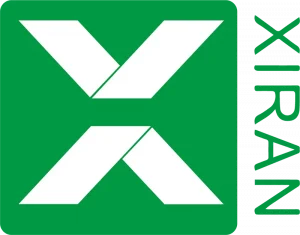
Self-tanning products (as a beauty product that can achieve a healthy skin tone without UV exposure) have quickly become popular in the global market in recent years. As consumers pay more and more attention to personalized aesthetics and healthy skin care, the demand for self-tanning products continues to rise.
The key to its popularity lies not only in marketing strategies, but also in the scientific formulation and continuous optimization of the functions of core ingredients. This article will explore the hot-selling ingredients of self-tanning products in depth, analyze their mechanism of action, market trends and consumer preferences.

DHA is the most widely used active ingredient in self-tanning products and is usually extracted from fermented sugar cane or beets. It reacts with amino acids in the keratinocytes on the surface of the skin to produce melanoidins, thereby simulating the effect of natural tanning.
High safety: No UV exposure is required, avoiding the risk of skin damage caused by traditional sun exposure.
Natural effect: The depth of skin color can be adjusted according to the concentration to meet different needs.
Market data shows that products containing DHA Self-tanning products dominate the global market, and demand is expected to continue to grow in the next few years.

Erythritol is a natural sugar ingredient that is often used with DHA to improve the uniformity and durability of the tanning effect. Compared with DHA, erythritol is milder and can effectively reduce color differences and spots, making it particularly suitable for consumers who pursue a natural skin tone. In recent years, the proportion of erythritol used in high-end self-tanning products has gradually increased, becoming a highly anticipated auxiliary ingredient.
Modern consumers' expectations for self-tanning products are no longer limited to tanning effects. Moisturizing and antioxidant functions have also become important considerations. Common related ingredients include:
Hyaluronic acid and glycerin: lock in skin moisture to prevent dryness or peeling during tanning.
Vitamin E and Green tea extract: fights free radicals, protects the skin from external damage, and enhances the skin care value of the product.
The addition of these ingredients has enabled self-tanning products to develop from single-function to multi-functional skin care products, meeting consumers' demand for a comprehensive experience.

With the popularity of the concept of "clean beauty", natural and organic ingredients are becoming more and more popular in self-tanning products. For example:
Coconut oil: provides moisturizing and nourishing effects.
Aloe vera: soothes the skin and reduces irritation.
Green tea extract: has both antioxidant and skin care effects.
Market research shows that self-tanning products labeled "natural" or "organic" are more attractive to young consumers, and this trend is expected to become the mainstream of the future market.

Technological progress has brought new development opportunities for self-tanning products
Encapsulates active ingredients in tiny capsules to delay release and ensure a more even and lasting tanning effect.
Through pH adjustment or temperature sensing technology, the product is adapted to different skin types and environments to enhance the user experience.
These innovations not only optimize product performance, but also meet consumers' pursuit of personalization and high efficiency.

Consumer demand for self-tanning products is diversified:
prefer fast and natural tanning effects, and focus on portability and ease of use.
pay more attention to skin care functions such as moisturizing and anti-aging.
packaging design and brand stories have become important factors in purchasing decisions driven by the influencer economy.
Market trends show that self-tanning products are moving towards personalization, intelligence and environmental protection, and brands need to keep up with the trend to remain competitive.
The hot sales of self-tanning products are inseparable from the perfect combination of scientific ingredients and consumer needs. DHA and erythritol lay the core efficacy of the product, moisturizing, antioxidant and natural ingredients enhance the skin care value, and technological innovation injects new vitality into the market. In the future, as consumer preferences continue to evolve, self-tanning products will continue to make breakthroughs in functionality and sustainability, bringing more development opportunities for brands and manufacturers.

